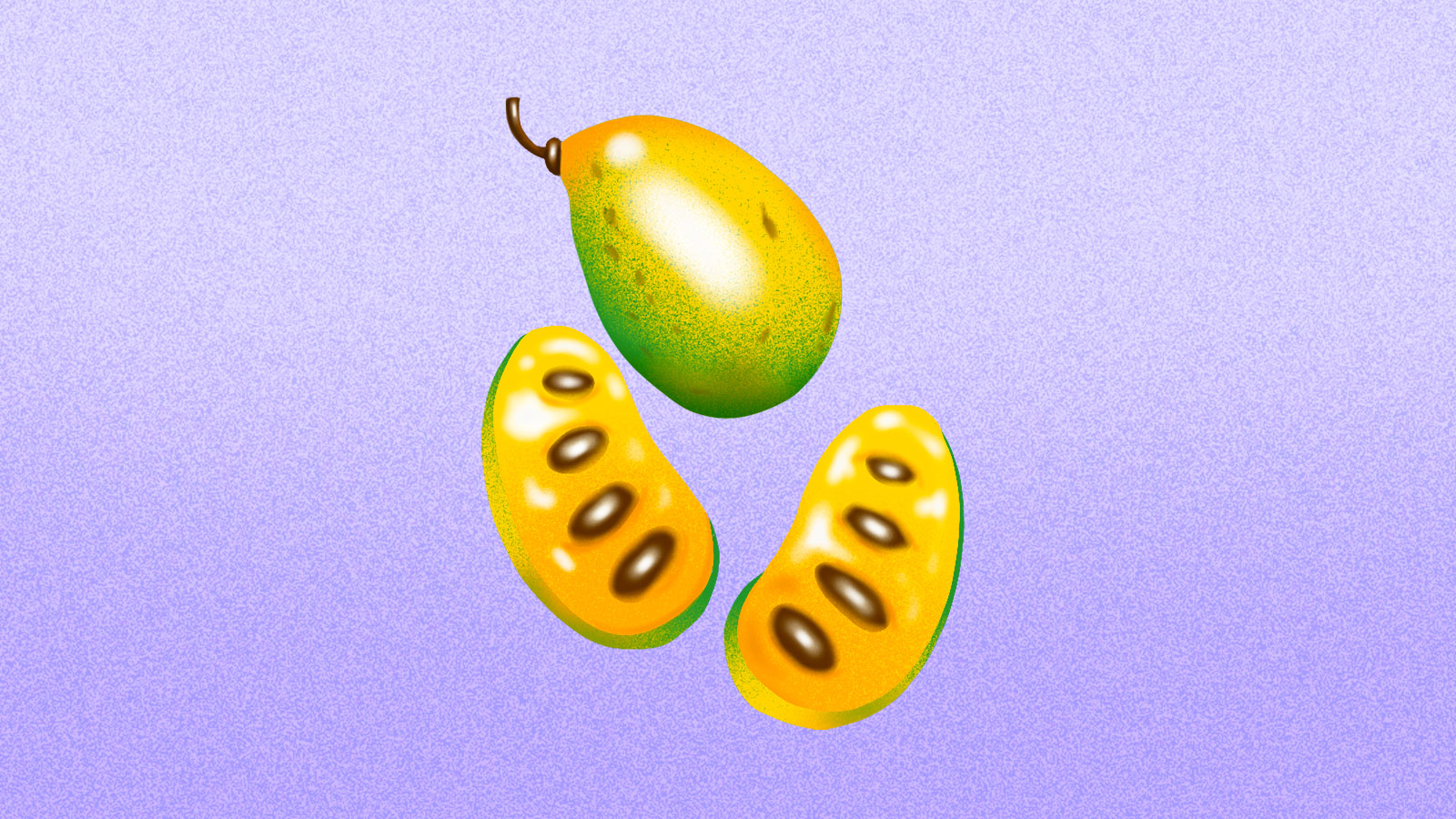As our climate changes, so will our diets. Fix is exploring that reality through the lens of foods that show what sustainable, equitable, and resilient eating could look like. Try them yourself with the recipes in our Climate Future Cookbook.
Garrison Hines would spend all of his time growing food if he could. The ironworker from Philadelphia developed a passion for farming in 2018 when an urban gardener showed him a mulberry tree, which produces fruit similar to blackberries. Although Hines had visited an apple orchard as a kid, that mulberry was the first tree he realized could be harvested near his home. They’re all around the city, the gardener told him. Hines had no idea.
Working on various urban greening projects through a job-training program helped Hines “see the city in a way I’d never seen Philadelphia before.” To him, it became a place that could produce a bounty of food, particularly in neighborhoods like North Philly, where he grew up. After volunteering at Philadelphia Orchard Project, Hines planted his own orchard in 2021. “I already had the site that I wanted to use in mind,” he says. “[It] has been an empty lot my entire life.” Today, he and community volunteers tend to 14 different fruit trees — from apple to elderberry — on that transformed piece of land.
North Philly isn’t the only place where land is coming alive. In cities across the United States, people struggling with food insecurity and lack of green space are looking to urban food production to tackle both. Covering more surfaces in vegetation can mitigate the heat island effect that disproportionately affects low-income communities and will only become more dangerous as the world warms. It can also provide a much needed source of fresh produce. While many are familiar with growing vegetables in backyards, rooftops, and urban farms, there’s another approach gaining popularity among policymakers, nonprofits, and residents: planting food-bearing trees.
With fruit trees in almost every neighborhood, Philadelphia provides a roadmap for others to follow. A residential tree-giveaway program, a community-informed strategic plan for tree cover, and collaboration with the nonprofit Philadelphia Orchard Project (POP) are just a few ways the city is working to bring food-bearing trees to neighborhoods most in need. In addition, residents, joined by community gardens, schools, and hospitals, are driving the trend. In just 15 years, POP has helped 67 sites grow stands of anywhere from three to a couple hundred food-bearing trees, bushes, vines, and other plants. In that time, many tons of fruit and nuts have made their way into people’s mouths, often at no cost to them.
While research about the potential of this urban food source is limited, a 2012 analysis of Burlington, Vermont, which has a strong local-food movement, found that even in a colder climate, fruit trees could have a significant impact on food security. Dotting just 5 percent of open space with apple trees could help as much as 20 percent of Burlington’s food-insecure population reach its daily fruit requirements.
Hines, through North Roots Orchards and his volunteer work, is among those helping this movement grow in Philadelphia. “I quickly realized that this is something that more people in my area needed access to,” he says. “So I’m just trying to find ways to create more.”
In Philadelphia, roughly one in six households are food insecure. That’s higher than the national average of 12 percent and has been for years. According to a 2019 report by the city’s health department, the lowest-income census tracts have about 28 percent fewer “high-produce” stores than wealthier areas. “Since I’ve been working in urban agriculture, [my family] has really been clamoring to get more fresh produce,” says Hines. “They always ask me.”
Neighborhoods most impacted by a lack of fresh food are under-resourced in other ways, too. An analysis of Philadelphia’s tree cover in 2008 found that while some wealthy areas had as much as 83 percent coverage, there were low-income neighborhoods with almost none, leaving them with hotter summers and poorer air quality. In an effort to mitigate that inequity, the parks and recreation department and Fairmount Park Conservancy spearheaded TreePhilly, a yard tree-giveaway program to help reach then-Mayor Michael Nutter’s goal of at least 30 percent coverage in every neighborhood by 2025. (The city’s forthcoming tree plan will direct even more resources toward this ambitious goal, including recommendations for foresting public areas.) Although the program didn’t initially target food insecurity directly, its staff noticed a trend: People wanted trees they could eat from.
“We really did hear from residents that food-bearing trees are important,” says Marisa Wilson, the urban forestry community organizer with Philadelphia’s parks and recreation department. Wilson learned from residents that the trees were more than a source of calories — they provided people with an opportunity to grow and harvest culturally significant foods, a process some had been divorced from as a result of migration. TreePhilly has given away over 25,000 trees in the last decade. In recent years, roughly 40 percent have been food-producing trees.
Philadelphia isn’t the only city with a hunger for apples, plums, and figs. In Baltimore, urban forester Ted Martello sees similar trends in the TreeBaltimore program, which has given away thousands of food-bearing trees in the past decade. “I like to joke that people are foaming at the mouth to plant these trees,” says Martello, who works at the city’s recreation and parks department. “We’re committed to simply expanding the tree canopy. Fruit trees tie into that.”
Roughly half of the bounty harvested from POP’s 67 partner sites — a few tons each year — is given to food pantries, sold at affordable prices at farmers markets, or simply picked by passersby looking for a snack. An estimated 6,532 Philadelphians tasted something grown in one of these orchards in 2019. Hines, who volunteers with POP, helps harvest produce from Fair Amount Food Forest, which grows vegetables as well as fruit in Philadelphia’s Fairmount Park.
“We are producing anywhere from 200 to 300 pounds of produce a week, which is given out weekly and is gone within minutes,” Hines says. And with saplings and berry bushes that will start bearing fruit in the coming years, that will only increase. “So in the future, it’s going to be way more abundant. A lot of people can eat off a small plot of land.”

* * *
Part of what makes trees so impactful is that a healthy one can give generously for decades, if not longer. While vegetable farming requires planting anew every season, trees do not, says Nina Beth Cardin, rabbi and founder of the Baltimore Orchard Project, which works with TreeBaltimore. “They’re … for people who will come five years from now, 10 years from now, people who are in the next generation,” she says. Trees also don’t require much space. Baltimore is planting them on sidewalks and other areas currently covered in concrete. Martello says there are thousands of open spaces between existing trees or on streets with minimal tree cover.
To populate a city with so many trees and keep them bearing fruit requires a know-how for pruning, applying compost, and dealing with pests. “One of our goals is to really help our partners increase their productivity,” says Kim Jordan, POP’s co-executive director. Such care will be even more important as climate change brings warmer weather, more rain, and greater susceptibility to disease. POP is experimenting with varietals that will be heartiest in these conditions, like Asian pears, pawpaws, figs, and persimmons. In Baltimore, Martello says that white swamp oak, which provides acorns that can be ground into flour, will do much better than the standard white oaks that are struggling under too much rainfall in the area.
Maximizing the potential of urban fruit trees also includes exposing people to less common foods and preparations. For example, most people don’t think to harvest acorns, but Martello points out that they have long been a key ingredient in Indigenous diets. Others may not be familiar with pawpaw, which tastes like a banana. Norris Square, an orchard site in a primarily Latino neighborhood in Philadelphia, is offering a pawpaw hot sauce-making workshop to inspire people to use new ingredients in traditional dishes.
“My dream is that residents have the resources they need to pursue food production in the ways that best benefit them and connect them to their neighbors, culture, and ancestors,” says Wilson.
She and others doing this work believe in a future where trees are abundant and where everyday people steward them. They see residents filling backyards, parks, and vacant lots with berries, bushes, and vines — tapping into their lineages to find points of connection to the process of tending, harvesting, and preparing the abundance. If their vision becomes reality, cities will be lined with food-bearing trees, children will pick pawpaws and apples on their way to school, and all will thrive beneath a canopy of green.
“It really is a miracle watching fruit develop on trees,” Cardin says, “and to have communities witness that season after season.”
Read more from the Climate Future Cookbook:
- How eating invasive, and tasty, lionfish could save marine reefs
- How perennial wheat could reverse the damage of industrial agriculture
- Precision fermentation may be the secret to better vegan cheese





